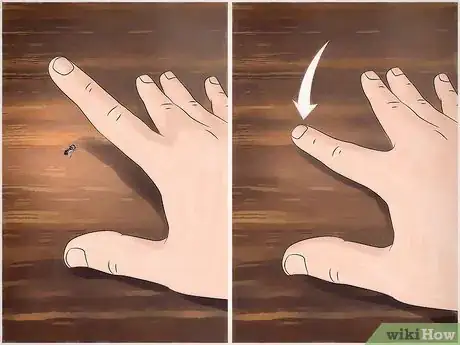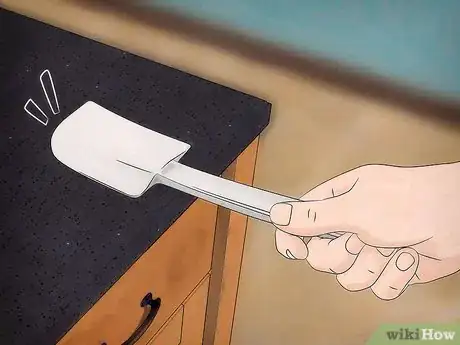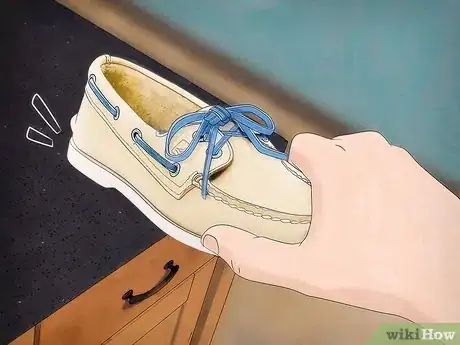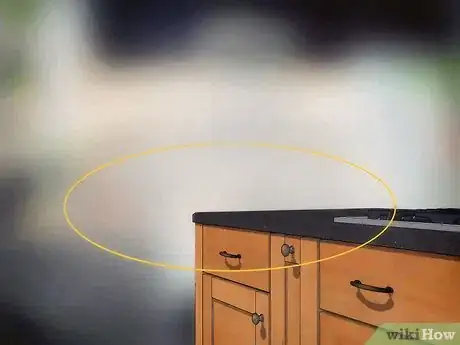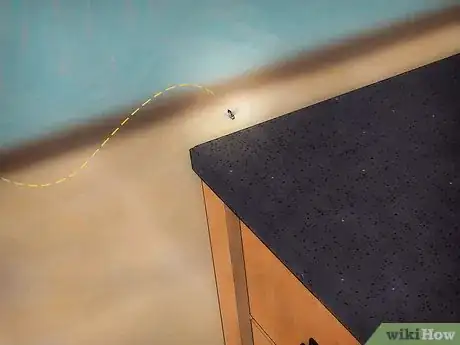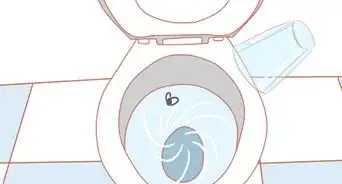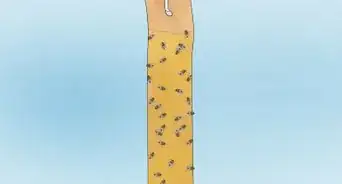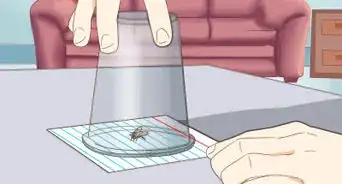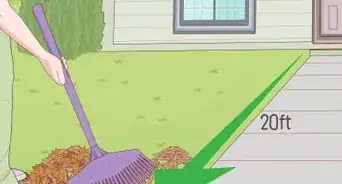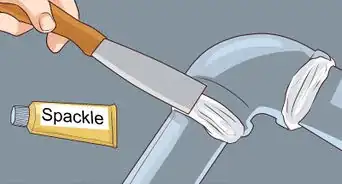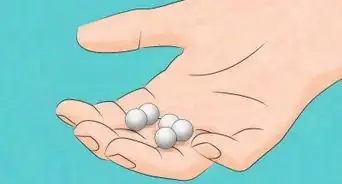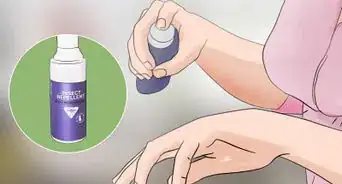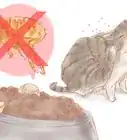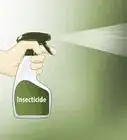This article was co-authored by wikiHow Staff. Our trained team of editors and researchers validate articles for accuracy and comprehensiveness. wikiHow's Content Management Team carefully monitors the work from our editorial staff to ensure that each article is backed by trusted research and meets our high quality standards.
This article has been viewed 124,875 times.
Learn more...
Houseflies can be difficult to catch and get out of the home, as they fly quickly and can anticipate movement from changes in the air and their 360° field of vision. What if you don’t have a fly swatter on hand when you want to catch one? There are a few ways to swat a fly with either your hand or another object. Learn how to use these methods to most effectively swat a fly without a fly swatter.
Steps
Swatting With Your Hands
-
1Slap the fly with one hand. Swat a fly by trapping it between one hand and a hard, flat surface that you have gotten it to land on. Move slowly toward the fly, then slap it quickly and firmly with your hand.
- Approach the fly very slowly until you are within an arm’s length of it. Keep your arm still until you are in position, then move it as quickly as possible in one motion toward the fly to hit it.
- If you are approaching the fly from behind it, anticipate its quick forward motion by aiming your hand slightly (a few inches) in front of it for the slap. If you are coming at the fly from the front, arc your hand over and slightly behind the fly in case it flies backwards.[1]
-
2Propel one finger to hit the fly. Lift up one finger on your swatting hand using your other hand (the pointer or middle finger works best). Then position that hand flat on the surface that your fly is on, then release your finger to snap it down and hit the fly at a quick rate.[2]
- Move your hand very, very slowly until it is in position on the flat surface that the fly has already landed on. Make sure the finger you have pulled back is in perfect position over the fly before you release it.
- Because this method requires you to place your hand so close, it may not work with quickly-moving flies. Try it on flies that have slowed down due to age, colder weather, or time of day.
Advertisement -
3Clap the fly between two hands. Approach a fly slowly with two hands on either side of it, palms facing toward the fly. Then bring your palms quickly together as if you were clapping to trap the fly between them.
- Aim a few inches above the fly when you bring your hands together to anticipate it escaping upward.[3]
- Use a variation of this method if you want to humanely capture a fly and release it outside without killing it. Instead of bringing your two palms together, make one of both of your hands into a cupped position before bringing them together to catch the fly in the space made between your hands.
Swatting With an Object
-
1Swat with a spatula. Use a spatula just like you would a regular fly swatter to catch a fly between it and a flat surface. Move close to the fly slowly, then move the spatula quickly so the flat part of it hits the stationary fly.
- Choose a slotted spatula or one with small holes if possible. This will cause less air resistance and make the change in air pressure less easy to detect by the fly.[4]
- Remember to wash the spatula with dish soap and water after you’ve used it to swat flies and before you use it for food.
-
2Hit with a solid, heavy object. Swing at the fly with a heavy object, which will help propel the swatting motion with its weight. Try a shoe, a book, or a similarly solid object.
- Choose something that is small enough and easy enough for you to swing with one or two hands. As always, you want to move slowly to position yourself close to the fly, then move in one very fast motion to swat with your object.
- Many people like to use a rolled-up newspaper or magazine to swat flies with, as the paper becomes sturdier when rolled but remains light enough to swing quickly and easily. Just make sure it doesn’t come unrolled and that you aim carefully when using this method.
-
3Try a dish cloth or towel. Pull at opposite corners of a dish cloth, rag, or small towel with two hands. Then release one hand as you bring the towel down in a swinging motion to hit the fly with it.[5]
- Dampen the towel with water to make it heavier and more likely to hit the fly with force.
- Make sure to use a small hand towel size of fabric that you can easily swing at the fly. A larger towel will be too unwieldy and not reach the fly with as much force.
Getting the Fly to a Flat Surface
-
1”Shoo” the fly into the desired direction. Get the fly to an area you can more easily swat at it, like a small, clean room with lots of flat open surfaces. Wave your hand near it to disrupt its current resting place and move it in the direction you want.
- Close off interior doors in your house to contain the fly to one room. This will give it fewer objects to land on, and help you see it and keep track of its movements in a smaller space.
- You may also use an object like a newspaper or magazine to help shoo the fly by “fanning” or moving the air around the fly with it to help guide it in the right direction.
-
2Locate a good flat surface. Find a suitable surface for swatting at a fly effectively with your hands or another object. Look for hard, flat, and even surfaces that will make it easier to hit the fly.
- While a vertical surface like a wall may work sufficiently, a horizontal surface like an empty tabletop typically works best, as you have the additional help of gravity when swatting downward.
- It helps to pick out several possible surfaces in the fly’s area that it might land on and that you can be ready to approach slowly.
- Be sure that any surface you have in mind is clear of items that might get disrupted or broken by a heavy swatting motion. For instance, avoid a wall with hanging pictures or a glass-topped coffee table.
-
3Wait until the fly lands in a good spot. Once you’ve ushered a fly into the room you want, wait until it lands on one of the surfaces you’ve picked out as good for swatting. Be patient in waiting for this to happen.
- Try waiting earlier or later in the day to catch a fly if you can. Houseflies are more active in the hottest part of the day, when their food sources are decomposing quickest, so they will be harder to catch resting in any one spot.[6]
- You can also try to tempt a fly to one of your ideal surfaces by placing a small amount of moist food containing proteins or sugars on it. Try a small dab of fruit jam, for example, or even a little piece of raw meat.
Expert Q&A
-
QuestionWhat is the best homemade fly repellent?
 Joshua BloomJoshua Bloom is a Pest Control Specialist and the Vice President of Operations of Standard Pest Management, a pest control company based in New York City. He has over 20 years of experience in the pest control industry and specializes in commercial and large facility pest control management. Standard Pest Control also specializes in ant, bed bug, cockroach, fly, and rodent control. Joshua is licensed by the NYSDEC (New York State Department of Environmental Conservation) for termite control.
Joshua BloomJoshua Bloom is a Pest Control Specialist and the Vice President of Operations of Standard Pest Management, a pest control company based in New York City. He has over 20 years of experience in the pest control industry and specializes in commercial and large facility pest control management. Standard Pest Control also specializes in ant, bed bug, cockroach, fly, and rodent control. Joshua is licensed by the NYSDEC (New York State Department of Environmental Conservation) for termite control.
Pest Control Specialist It's not a question of repellants—it's all about eliminating the fly's food source (such as old fruit or unwashed juice, soda, or beer bottles).
It's not a question of repellants—it's all about eliminating the fly's food source (such as old fruit or unwashed juice, soda, or beer bottles). -
QuestionHow do I kill moths? They are in every room in my house.
 Brady CohenCommunity AnswerThey are attracted to light. You could put a light outside of your house and turn off all of the lights inside and wait, then close the door once they are all outside. You could also buy a bug zapper and move it from room to room.
Brady CohenCommunity AnswerThey are attracted to light. You could put a light outside of your house and turn off all of the lights inside and wait, then close the door once they are all outside. You could also buy a bug zapper and move it from room to room. -
QuestionWill my cats try to eat a trap?
 Community AnswerThat is unlikely. Most cats don't eat flies. If you are concerned, put it somewhere the cat can't access.
Community AnswerThat is unlikely. Most cats don't eat flies. If you are concerned, put it somewhere the cat can't access.
References
- ↑ http://lifehacker.com/5857984/a-scientific-approach-to-swatting-flies
- ↑ http://lifehacks.stackexchange.com/questions/1798/is-there-any-way-to-kill-a-fly-without-a-flyswatter
- ↑ http://news.bbc.co.uk/2/hi/uk_news/magazine/8105232.stm
- ↑ http://news.bbc.co.uk/2/hi/uk_news/magazine/8105232.stm
- ↑ http://lifehacks.stackexchange.com/questions/1798/is-there-any-way-to-kill-a-fly-without-a-flyswatter
- ↑ http://animals.mom.me/houseflies-attracted-to-5559.html

